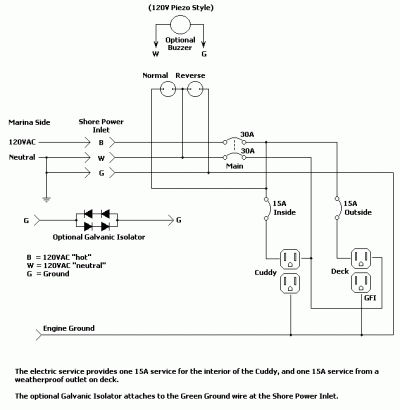boomerang
Guru
- Joined
- Apr 29, 2016
- Messages
- 1,398
- Location
- united states
- Vessel Name
- Wandering Star
- Vessel Make
- PSN40
I'm looking for the input/wisdom of those experienced with running AC current from a residential service panel to a sub panel at a remote location. I'm comfortable with the wiring/adding a sub panel but not sure about the other aspects of the project such as the adequate wire gauge for the run & the grounding at the sub panel.
I currently have a buried 10-2 with ground running from a sub panel in the kitchen on the water side of the house carrying 120v ~250' from the receptacle at the end of the dock. It will deliver 115-120v to the boat with a light load of 5-10 amps or so. Fine for a few lights & a battery charger (as long as it's not running in the bulk charge mode) but nowhere enough for heaters or air conditioning.
I want to make a run from the main panel in the house (opposite side of the house so ~300 feet away from the proposed 50A sub-panel location at the foot of the dock) using THWN-rated cable in conduit. The only load requirement I have now is a single 30A outlet for the boat which will probably never use more than 20A. The dock would get a 15A receptacle on the other leg for light-load things like ice-eaters & small appliances. I would perhaps add another 30A on the dock leg for our future boat should it require 220v just in case my wife says it's time to get bigger.
Depending on where I look online, I read 6 ga wire would suffice (for our present needs) but some say 4 or even 2 GA is the only way to go. Also ,some say 2 ground rods at the sub panel, not just 1.
What say those to my questions?
Thanks
Shawn
I currently have a buried 10-2 with ground running from a sub panel in the kitchen on the water side of the house carrying 120v ~250' from the receptacle at the end of the dock. It will deliver 115-120v to the boat with a light load of 5-10 amps or so. Fine for a few lights & a battery charger (as long as it's not running in the bulk charge mode) but nowhere enough for heaters or air conditioning.
I want to make a run from the main panel in the house (opposite side of the house so ~300 feet away from the proposed 50A sub-panel location at the foot of the dock) using THWN-rated cable in conduit. The only load requirement I have now is a single 30A outlet for the boat which will probably never use more than 20A. The dock would get a 15A receptacle on the other leg for light-load things like ice-eaters & small appliances. I would perhaps add another 30A on the dock leg for our future boat should it require 220v just in case my wife says it's time to get bigger.
Depending on where I look online, I read 6 ga wire would suffice (for our present needs) but some say 4 or even 2 GA is the only way to go. Also ,some say 2 ground rods at the sub panel, not just 1.
What say those to my questions?
Thanks
Shawn



